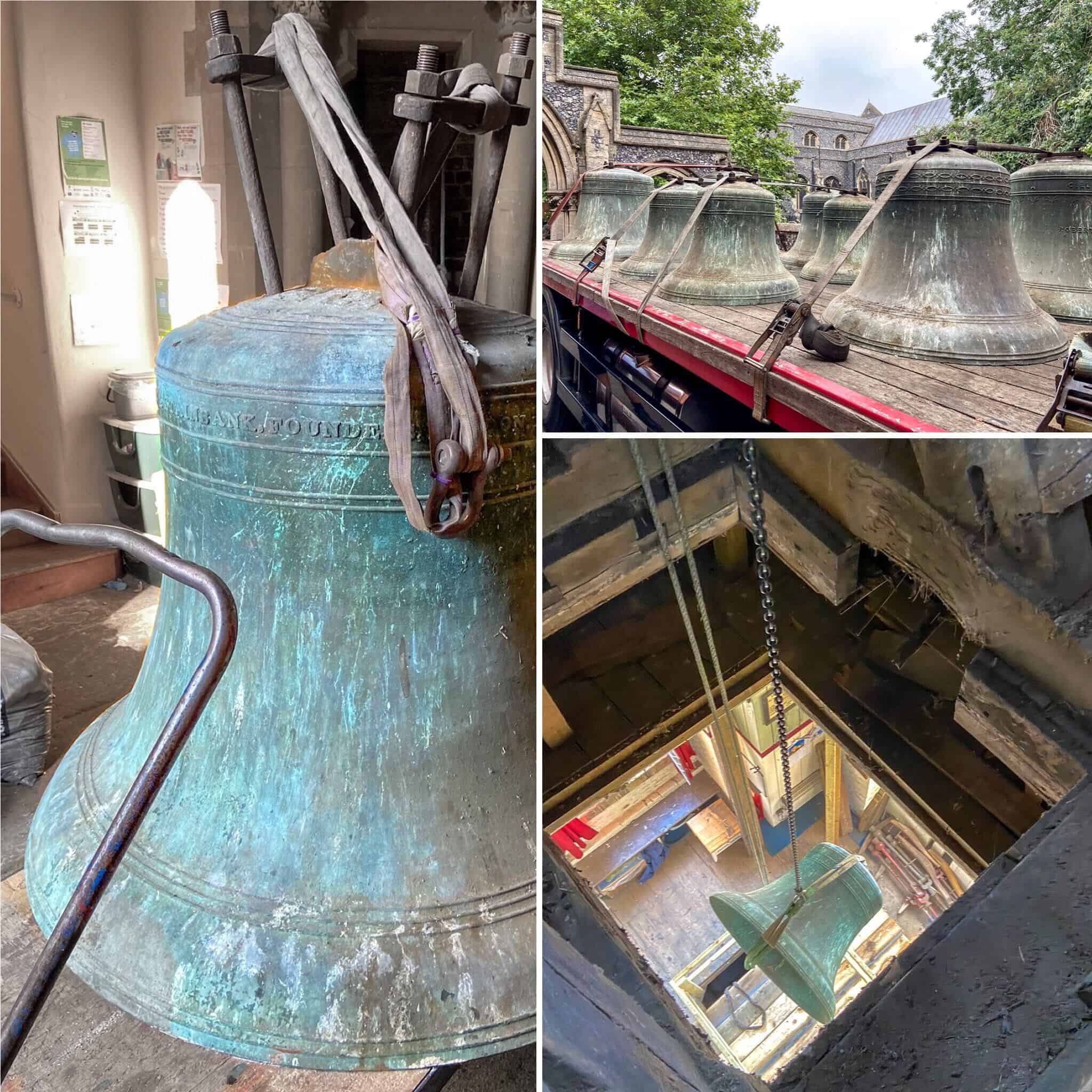Restoration of The Bells at St Mary of Charity in Faversham, Kent.

Restoration of The Bells at St Mary of Charity in Faversham, Kent.
At Lee Evans we love to work closely with our clients, the heritage team is no exception to this, working with churches provides a special relationship to flourish as the intentions of the project are often rooted in the need of the building or the community who use the building. We provide support to many churches throughout the south of England, one such church is St Mary of Charity in Faversham, Kent.
Friday 14th August saw the conclusion of the first part of a significant Heritage project, many years in gestation and managed by our heritage team, when all eight of the bells from the church were successfully removed from the tower and taken away for a thorough overhaul. The bells, most of which are two hundred years old or more, last had a major overhaul in 1930, since when they have continued to announce weddings, warnings, wars and changes of monarch with nothing more than regular maintenance. In recent years they’ve gained a reputation for being “difficult” to ring and, following the bequest of a legacy dedicated to the bells, we were invited to assist in bringing about a solution.
The frame in which the bells sit was quickly identified as the source of the trouble. Built in 1796, and contemporary with the graceful pierced spire by Charles Beazley, a previous history of “temporary” repairs, including wedging against the tower structure have meant that this complex piece of machinery rocks and flexes far more than it should- and with a tenor bell weighing nearly a ton and a half there are very substantial dynamic loads to be controlled. Without a proper understanding of the mechanism a mis-guided attempt at resolving the issues could mean failure – and this might be catastrophic.
As part of the development of the solution, consultation took place and a thorough analyse of the existing timber frame have identified simple repairs that will mean the safe retention of most of the Historic fabric- only the bearings and hanging apparatus (really just the “consumables”) to be replaced with new. The clients desire for a new frame will be met at least in part as two new additional bells will be cast and a small new metal frame installed above the timber one, creating a peal of ten- this means a light peal of six- ideal for training the next generation of ringers.
The bells sit tightly in a highly intricate oak frame, the whole assembly boxed snugly within the upper tower- difficult and to access- the previous route to the tower roof involved climbing on to the top of one of the bells! This work will also make this access much safer. Successive alterations below, such as the insertion of new ceilings and the re-location of the clock have meant that the bells have been imprisoned, and to remove them for overhaul has meant a complex juggling of consents, trades and specialisms to make the project practical and affordable whilst meeting the requirements of the Health and Safety Executive- dealing with heavy objects at height and in a confined space- and all, of course, now subject to Covid-19 social distancing! An additional blow caused by Covid was that the bells could not be rung one final time in their current form on the 75th anniversary of VE Day.
The project team includes John Taylor & Co of Loughborough, the main contractors (and, with the closure of the Whitechapel Foundry, the only firm left in Britain who can carry out such work), Public Clocks Ltd, and S & T Fullers of Faversham (who know the church well). The clock has been moved, ceilings cut open and the bells are at last out and the overhaul can begin.



